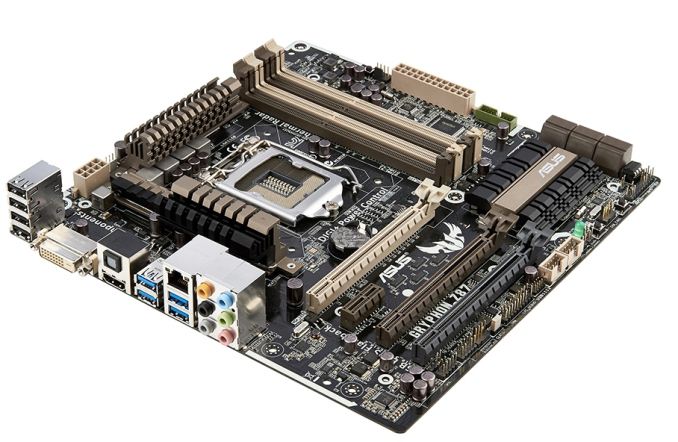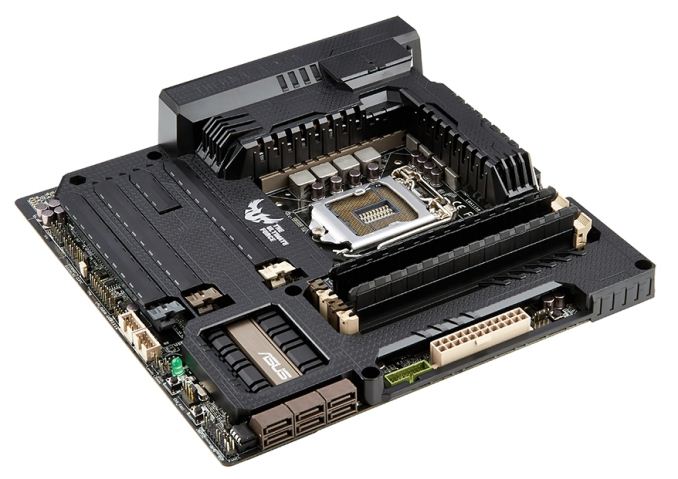ASUS TUF Z87 Gryphon Review
by Ian Cutress on February 3, 2014 10:00 AM EST- Posted in
- Motherboards
- Asus
- Z87
- TUF
ASUS TUF Z87 Gryphon Conclusion
When covering the Z87 Gryphon, or any TUF product, it is hard not to keep mentioning the warranty status. This is what the line is based on after all – a higher rated component, or ones in the higher end of the quality/yield spectrum, in order to provide that extra longevity. This is akin to Samsung making SSD NAND and keeping the best for themselves – the TUF range aim to source whatever components they put on the board from the higher echelons of production.
As a result, the special parts and warranty do come in the form of extra cost. You get what you pay for, right? The Gryphon has a rough time competing against other products in the same price segment for feature set. The Gryphon comes with no extra SATA Controllers, no extra USB 3.0 controllers or hubs, no power/reset buttons, no two digit LED, and so on. This all helps in keeping the component count down on a product (there is less to go wrong), but ultimately this also begs the question of whether a user needs more than six USB 3.0 ports, or more than six SATA 6 Gbps ports. Users can use PCIe cards if they needed more, some would suggest.
If we put the extended warranty and component choice out of our minds for a second, then the Gryphon has several features not on the regular channel market segment. First up is the number of temperature sensors on board. I counted 10, which includes three sensor headers for users to connect to other parts around the case (hard drives, PCIe cards). These tie into the fan control software which allows two point gradient configurations of all six 4-pin fan heads on board, and each fan profile can be tied into a weighted average of any of the sensors. For example, the CPU fans can rely on a profile where the temperature is calculated as 55% the CPU temperature, 35% the DRAM temperature and 10% the GPU temperature.
The Gryphon also offers an additional ‘Fan Overtime’ feature which keeps the fans spinning after the system is shut down in order to allow the equilibration of air inside and outside the case. This can be seen as important in humid climates, where hot air inside the case can cause inside condensation as it cools down. We have seen similar aspects on other motherboards, but this is the first time I have seen it on an ASUS product.
The Gryphon Armor Kit is sold separately to the motherboard and allows the board to be encased in a dust blocker that also forces cooling around the components on the motherboard. The rear plate also helps increase the rigidity of the motherboard due to large GPUs or awkward mounting locations.
While the Z87 Gryphon does not have overclocking as its primary focus, we achieved 4.6 GHz with our CPU sample, in line with many other Z87 motherboards we have tested before. Users looking for an automatic overclock will have to probe in the BIOS some to find them, but we get 4.1 GHz to 4.3 GHz within a few button presses easily. Performance is geared more towards longevity as well, so other motherboards might offer better stock performance too.
The Z87 Gryphon aims to sell on its main features: a five year warranty paired with the micro-ATX form factor. For that it does quite well, and ASUS are filling a well requested hole in their line-up. We have the Sabertooth in to review as well, which may satisfy the need for extra functionality, albeit in a larger size.












62 Comments
View All Comments
HandsomeChow - Wednesday, February 12, 2014 - link
The TUF components used have still to be tested but considering they are willing to backup the board with a five year warranty shows that they won't actually be using average run of the mill mosfets, caps and inductors right? Since it would actually negatively effect them if they use crappy-average quality electronics since it will cost more for them to replace the entire board for defective mosfets or inductors.Plus, the TUF series has one thing no other motherboards have and that is the advance thermal management and monitoring software. Which in my opinion is what stands out the most on the TUF series.
BernardP - Monday, February 3, 2014 - link
It's disappointing they went with the run-of-the-mill Realtek ALC892 audio codec, instead of the better ALC1150.Sivar - Monday, February 3, 2014 - link
The ATX "Sabertooth" model uses an ALC1150.DanNeely - Monday, February 3, 2014 - link
This is a somewhat general question; but is there any easy way to determine if a mobo's large number of USB3 ports are due to additional controllers or just to the use of onboard USB3 hubs?TGressus - Tuesday, February 4, 2014 - link
Manufacturer's website specifications, or product manual.https://www.asus.com/Motherboards/GRYPHON_Z87/#spe...
Teardroop - Monday, February 3, 2014 - link
I get the retail Armor Kit and it already has protectors for all the connectors, ALL! Audio, Video, USB, Ethernet, Internal USB, not just PCI-E and memory... I like it..bigboxes - Tuesday, February 4, 2014 - link
Why do you like it (besides it looking cool and all)?Tjalve - Tuesday, February 4, 2014 - link
So.. No ECC support and no C-series chipset. This is just a regular Asus board with 5 year warrenty and an optional platic cover that do more harm then good. Or am I missing somthing?ShieTar - Tuesday, February 4, 2014 - link
Why would you expect Server-Features from a board labeled "The Ultimate Force"?ShieTar - Tuesday, February 4, 2014 - link
"The Gryphon also offers an additional ‘Fan Overtime’ feature which keeps the fans spinning after the system is shut down in order to allow the equilibration of air inside and outside the case. This can be seen as important in humid climates, where hot air inside the case can cause inside condensation as it cools down."Can somebody explain to me why this would happen? If the air inside the case is just heated up air from the outside, then it absolute water content cannot be over the dew point of the outside air. So when you cool it back down to its original temperature, why would there suddenly be condensation? It's not like there are water reservoirs inside the case to saturate the air.